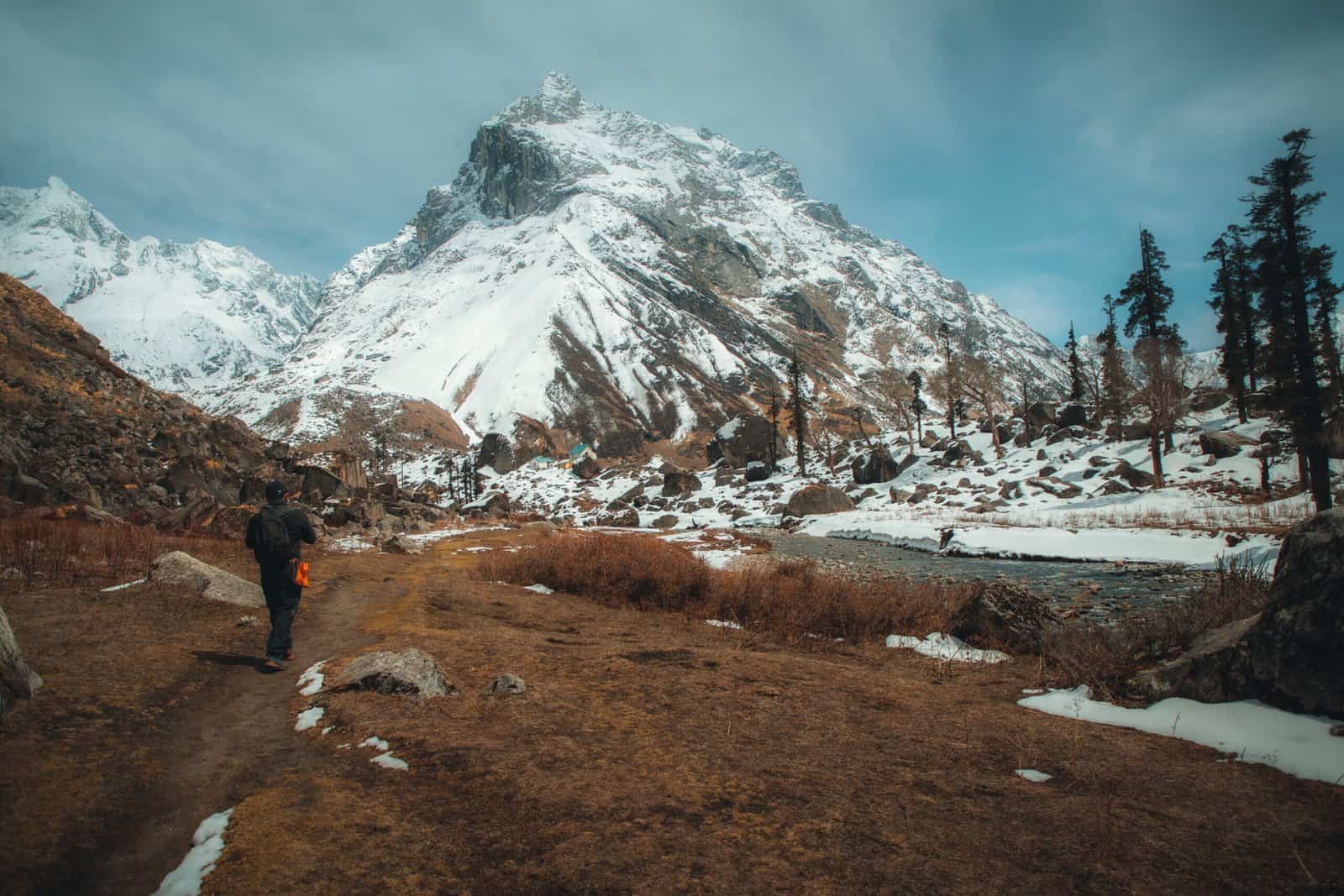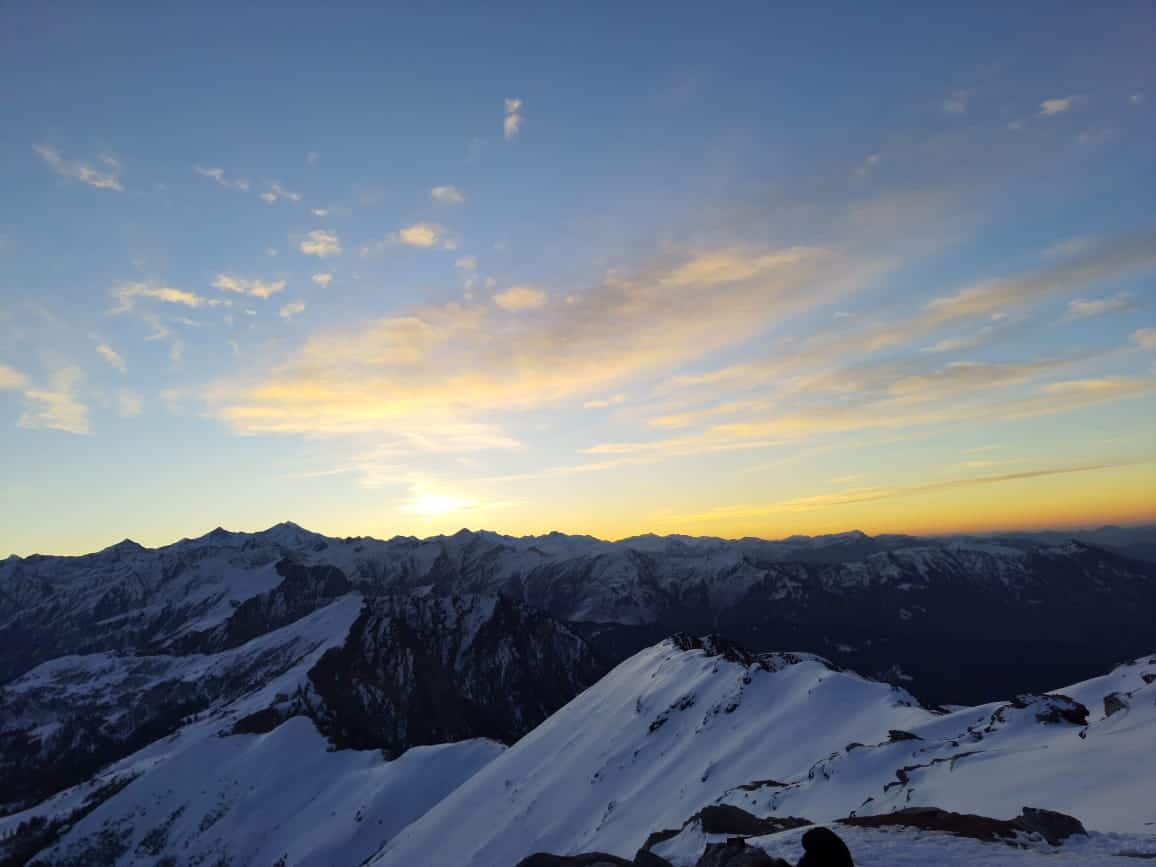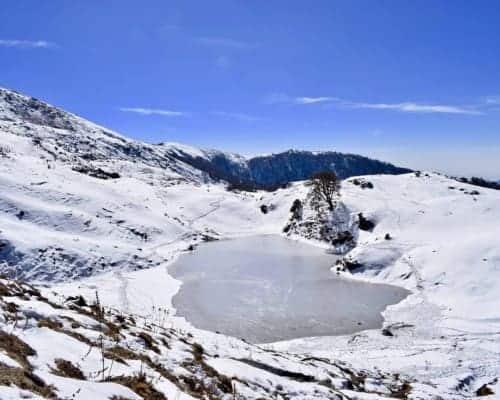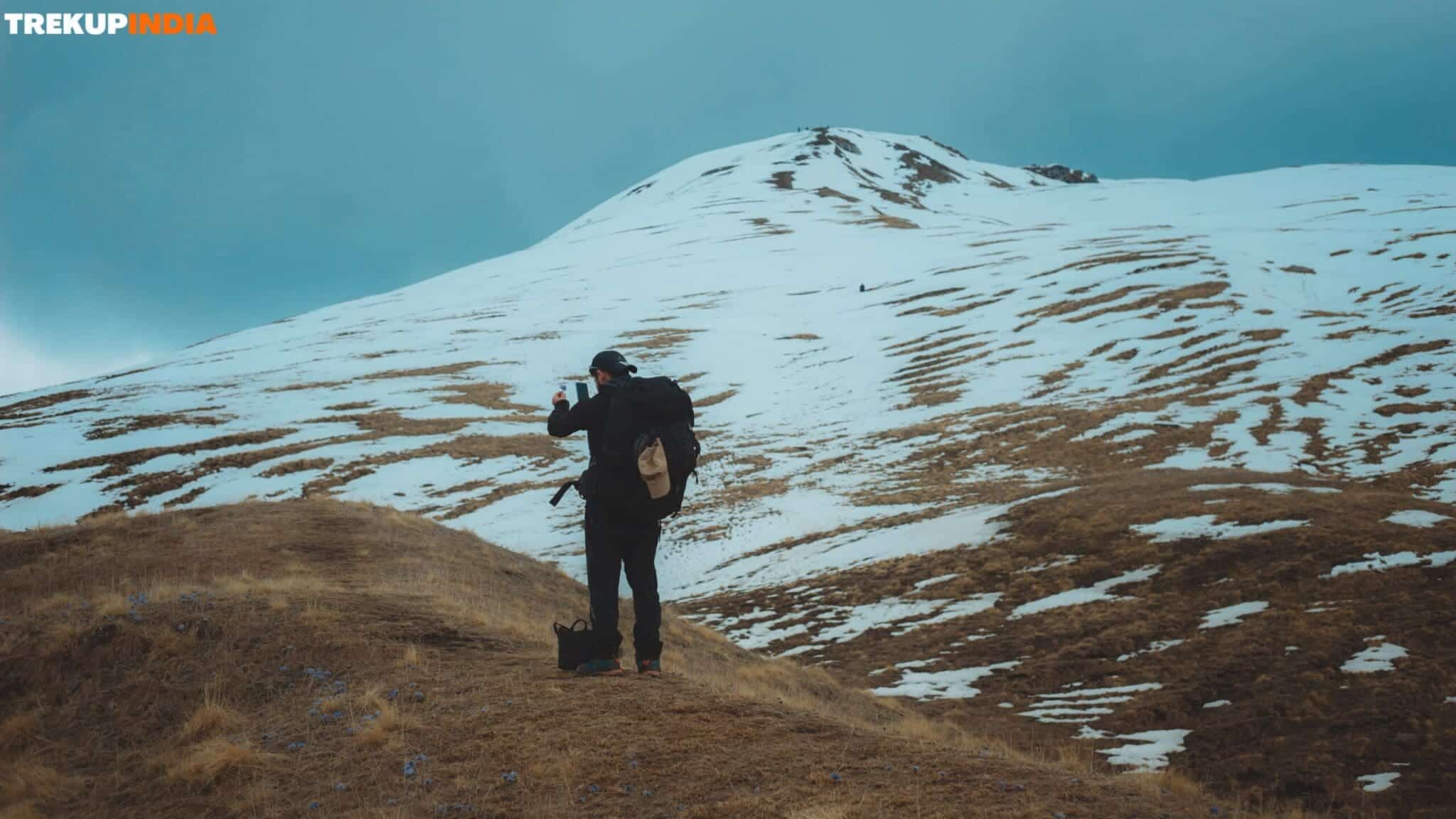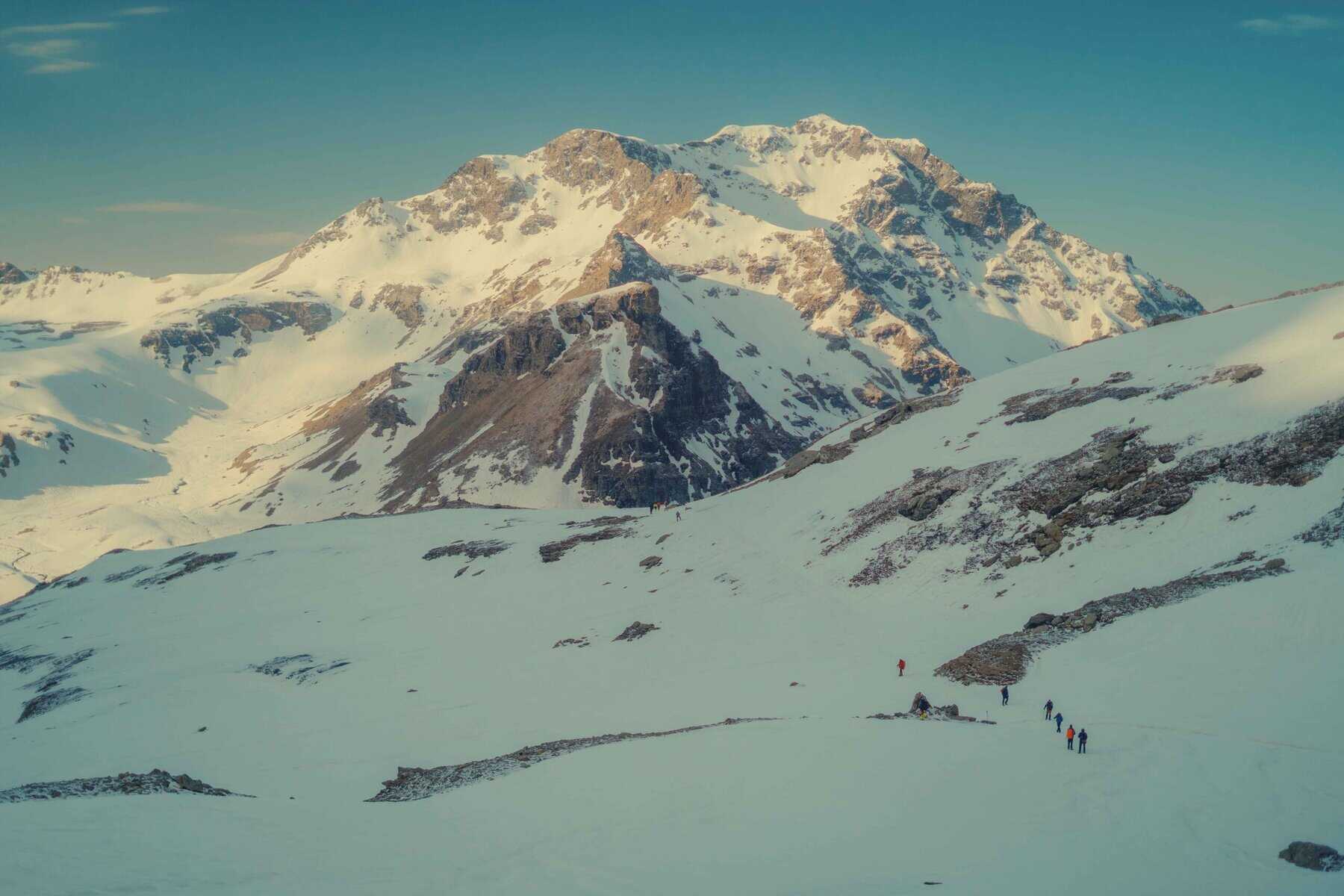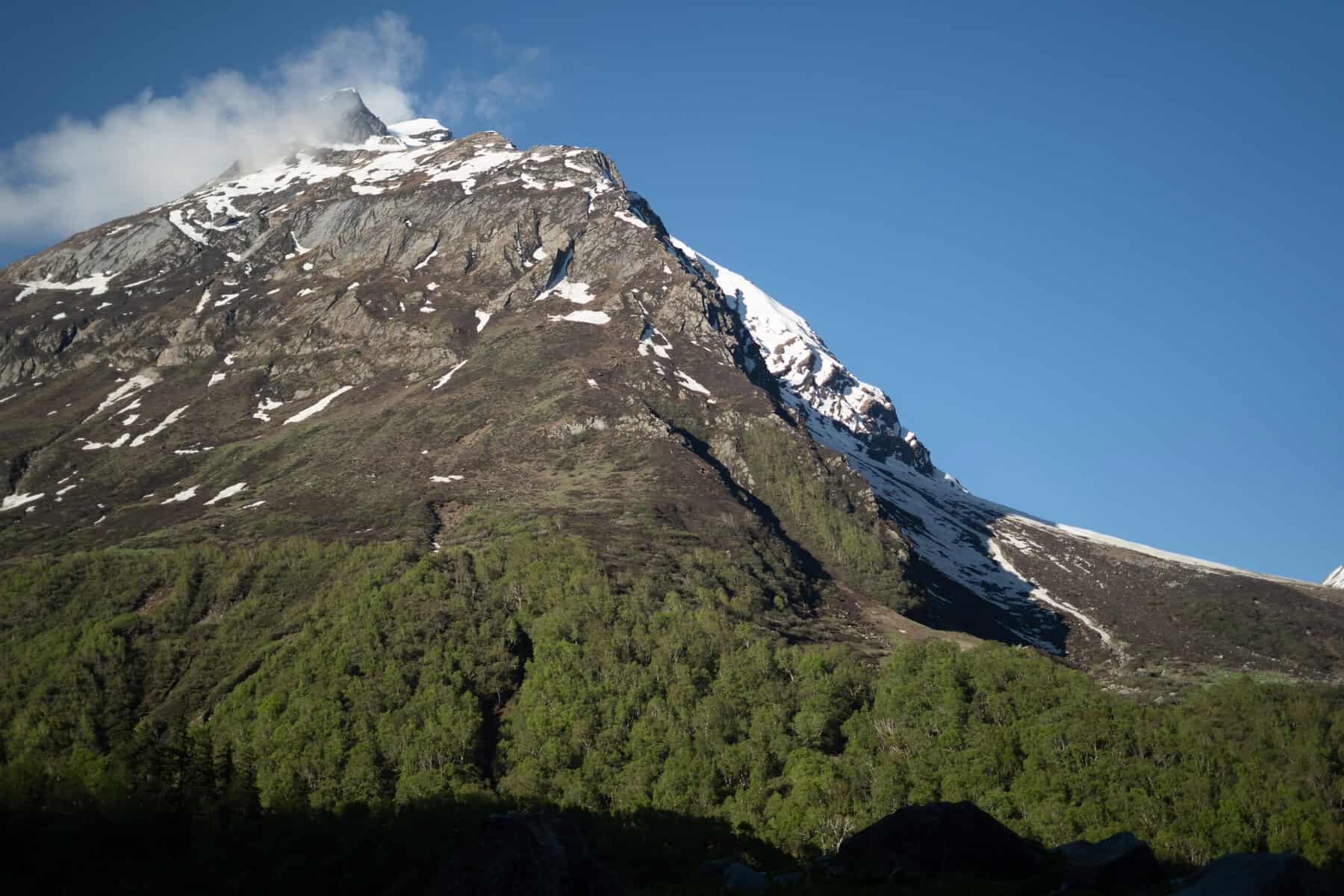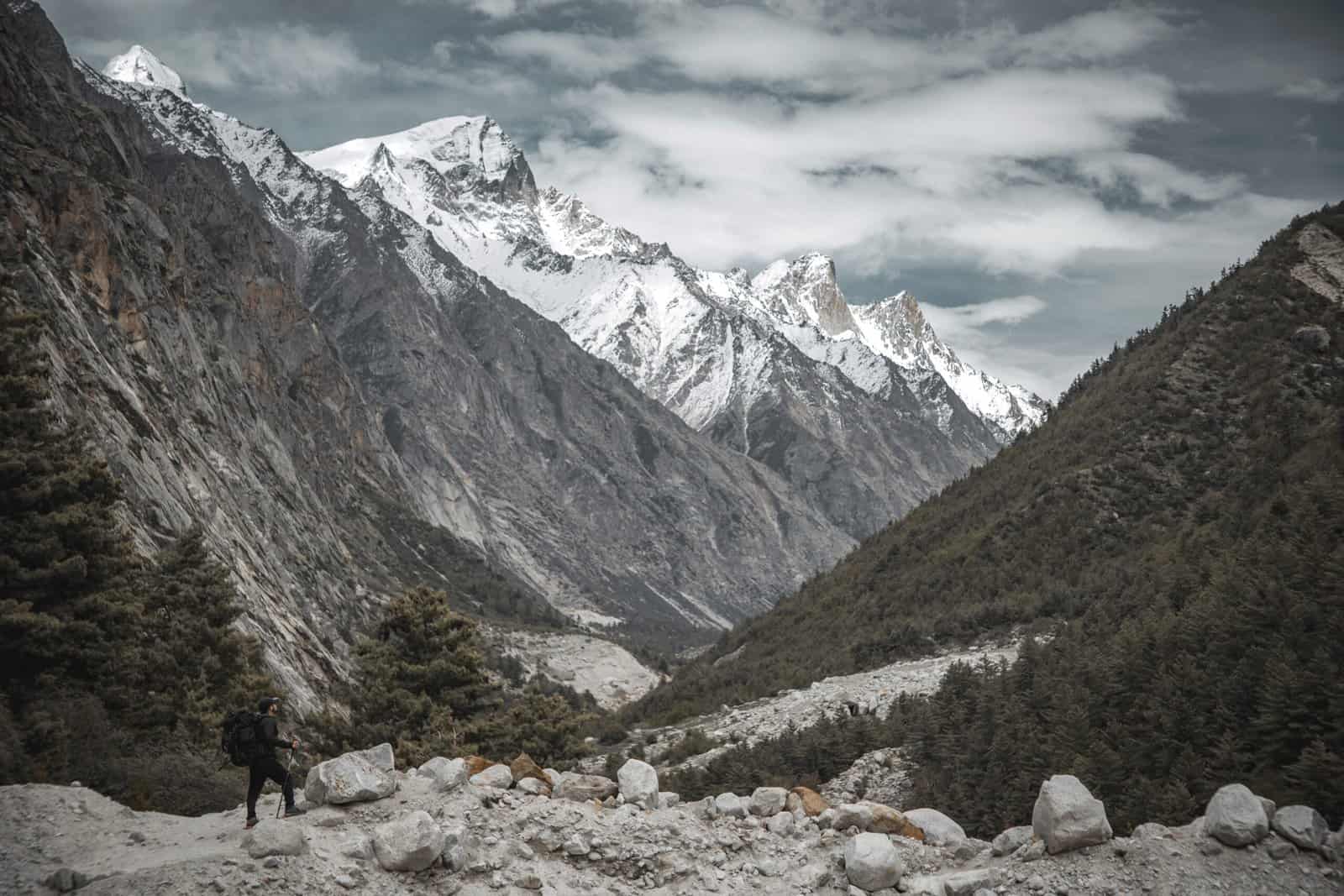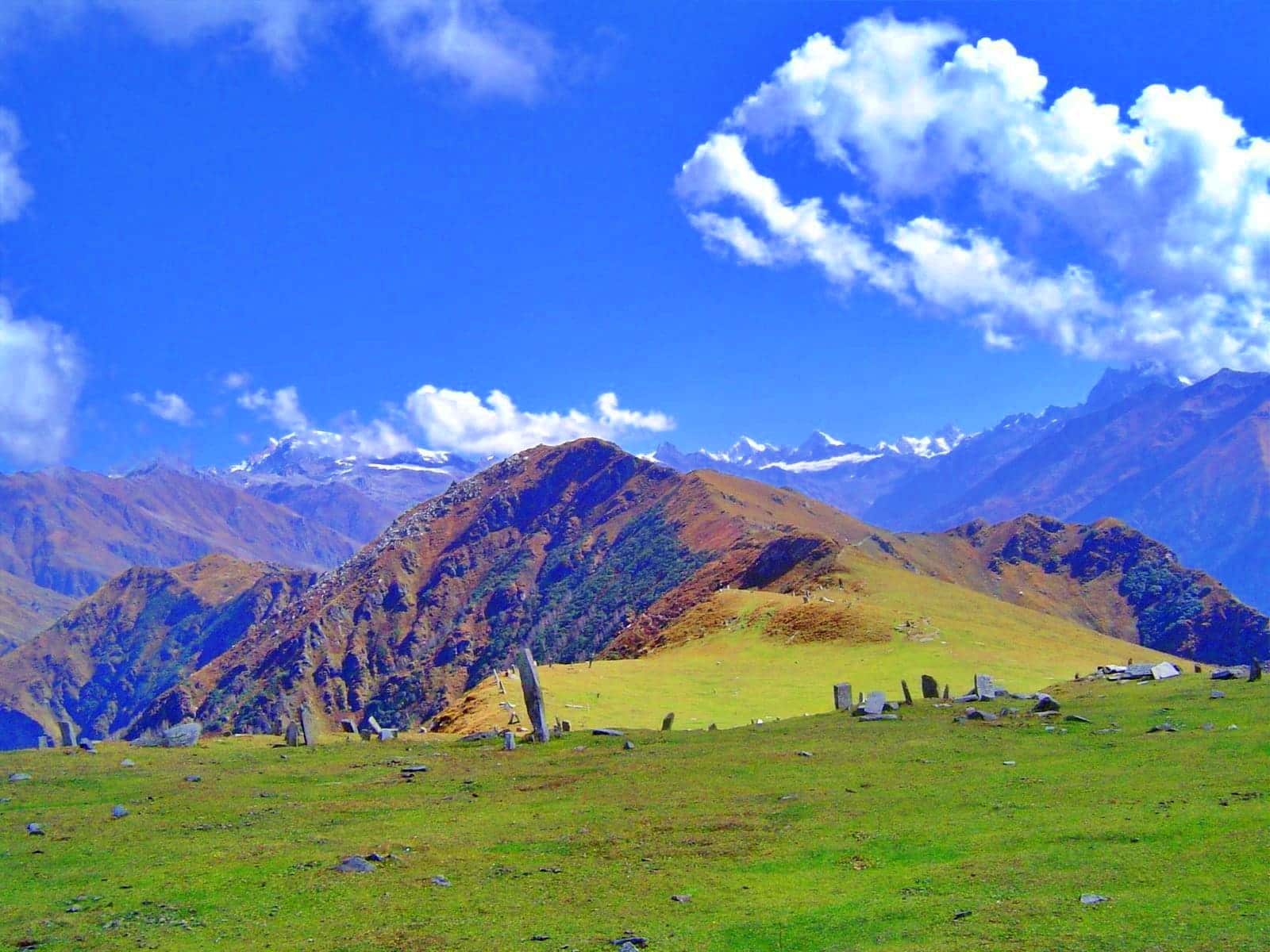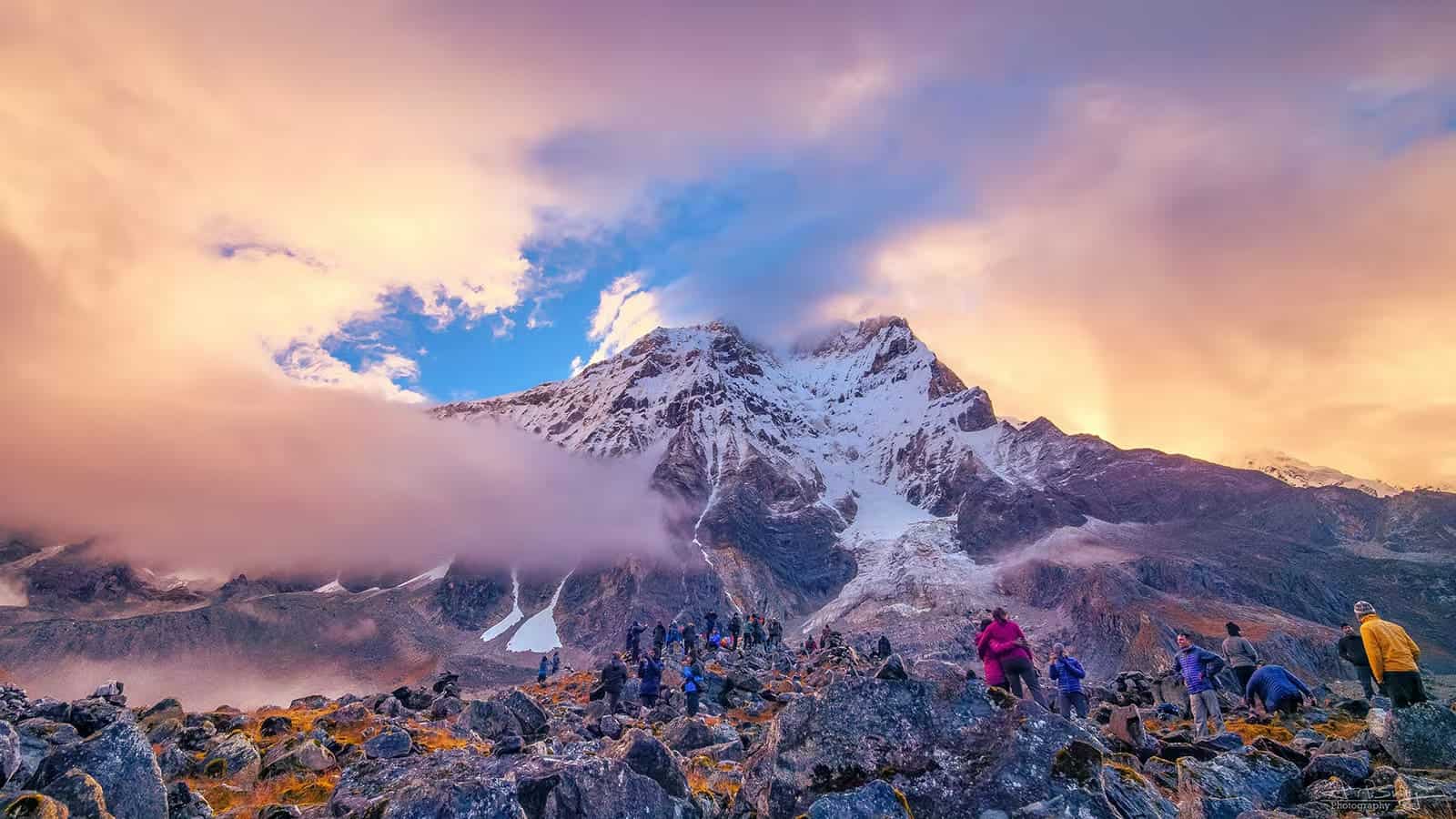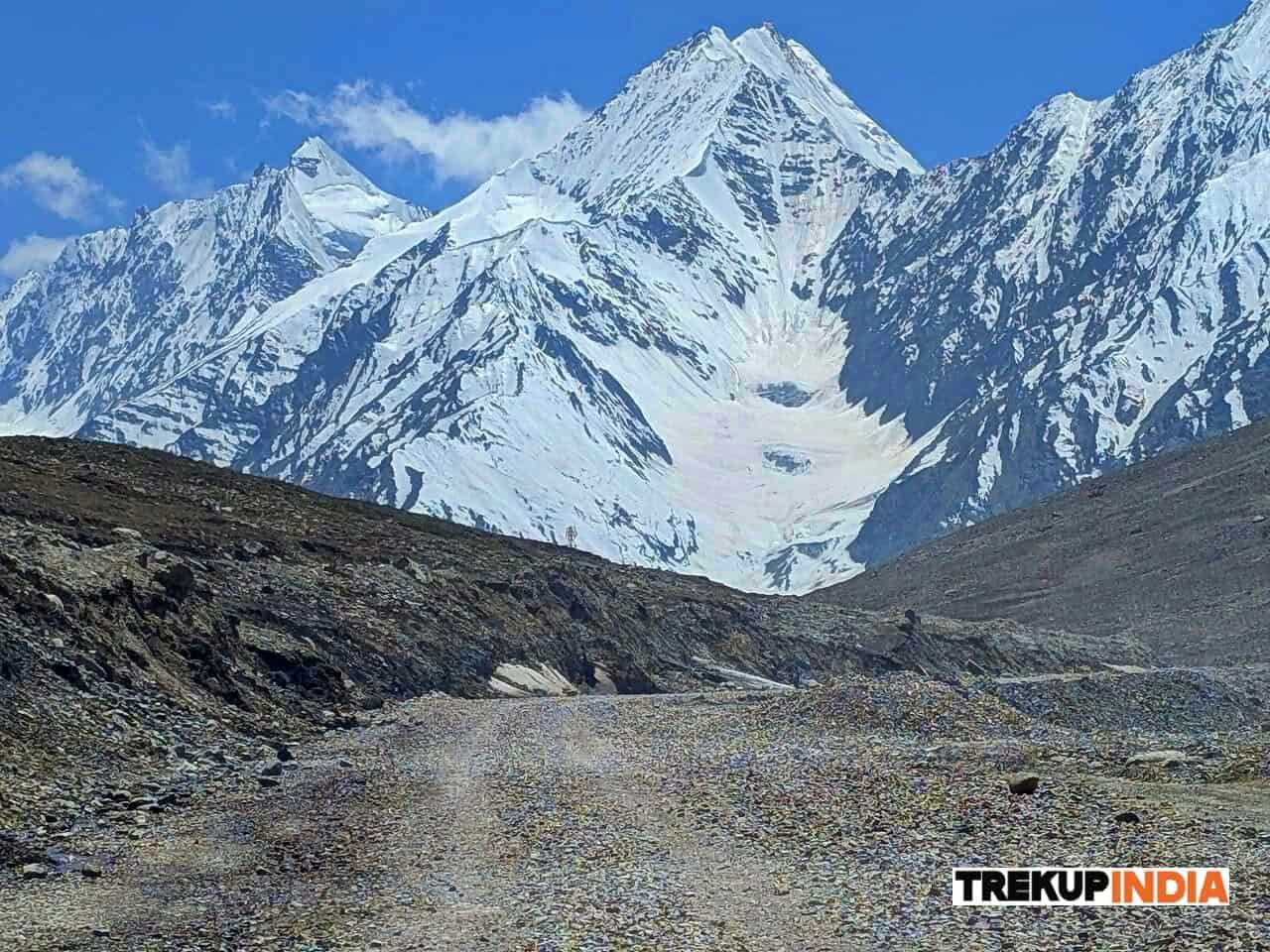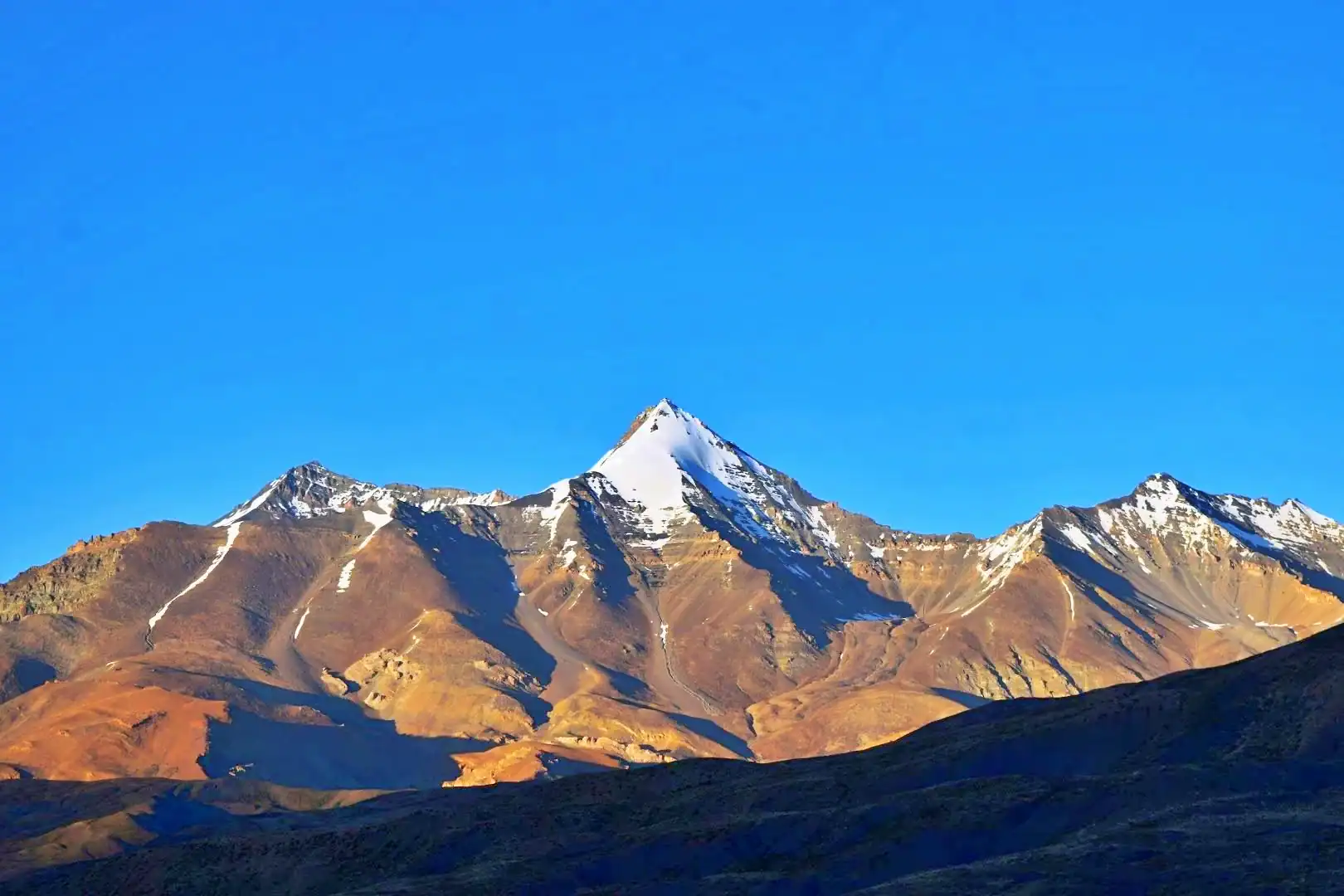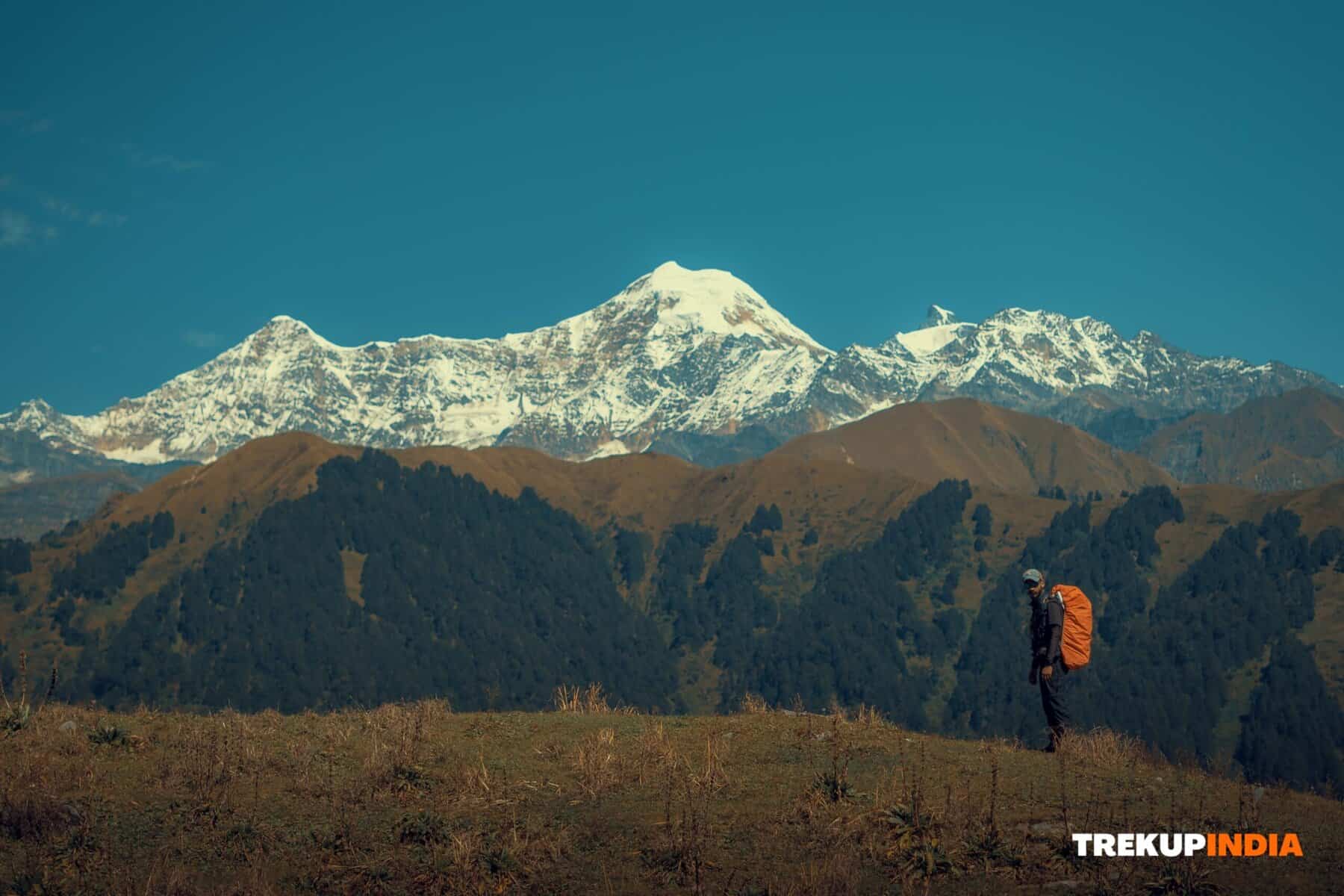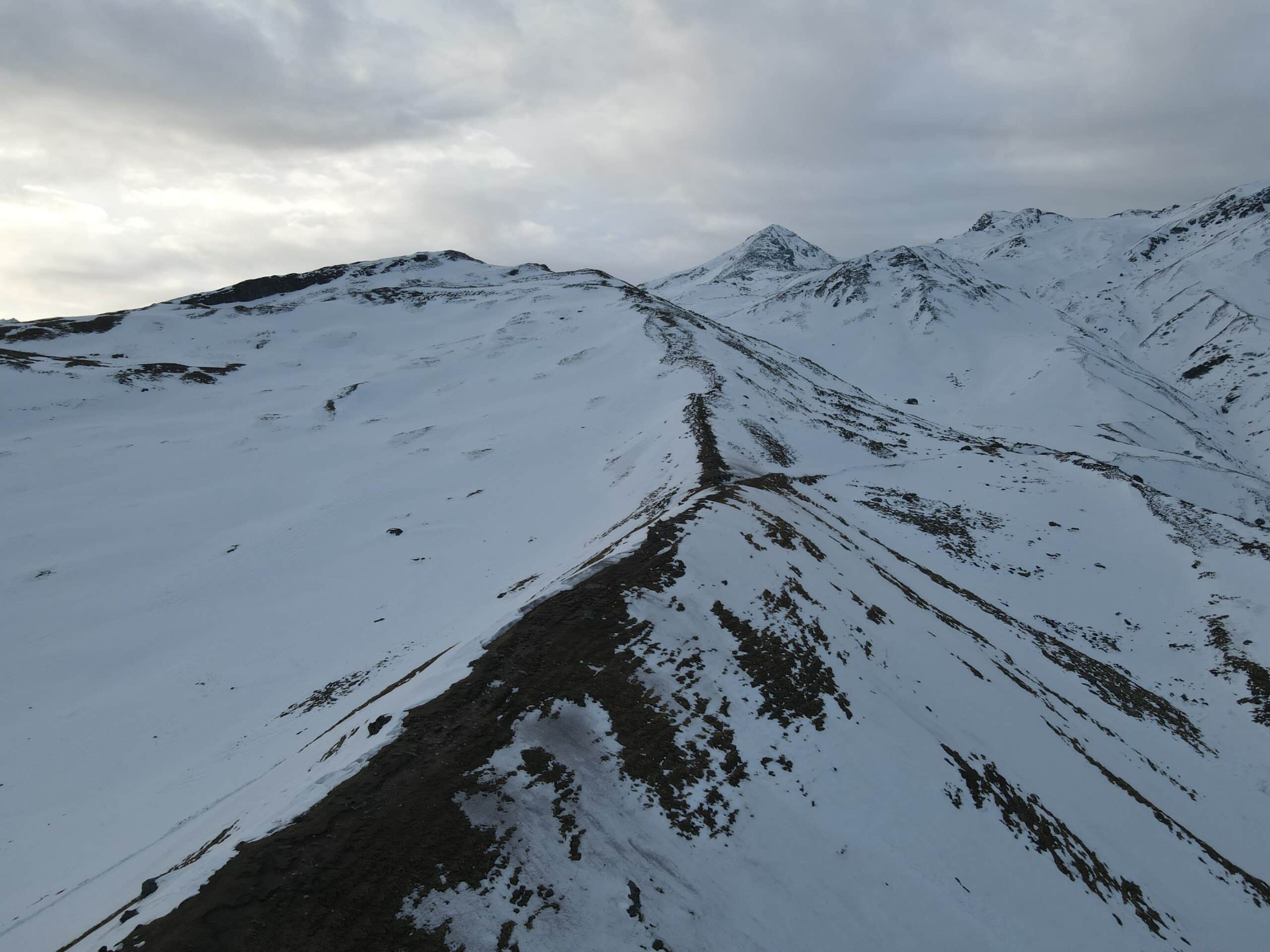Ama Dablam Base Camp
Ama Dablam Base Camp
The Ama Dablam Base Camp Trek offers an extraordinary adventure into the heart of the Everest region, giving a close-up view of one of Earth’s most remarkable peaks. Ama Dablam, often referred to as the “Matterhorn of the Himalayas”, stands at 6,812 meters with its distinctive pyramid shape dominating its surrounding environment. At 5,120 meters, the base camp provides an exceptional vantage of Mount Hood’s southern face as climbers prepare themselves for their climb. Contrasting with Everest Base Camp, this trek provides a more serene and personal experience, immersing trekkers into the mountaineering spirit of the Khumbu region. The journey starts off with an exhilarating flight to Lukla and continues through beautiful valleys, dense forests, and high-altitude terrains. Ascending gradually through Namche Bazaar and Tengboche Monastery via suspension bridges, crossing the Dudh Kosi River by suspension bridge, as you traverse its tranquil banks before ascending gradually through Namche Bazaar – home of lively Sherpa life – before finally arriving at Tengboche Monastery with its breathtaking views of Everest, Lhotse, and Ama Dablam. Your expedition shows the diverse landscape that exists here, from Rhododendron forests to alpine meadows; its towering peaks adorn every turn. Beginning in Lukla, trekkers embark on an exhilarating flight followed by an unforgettable trek through Sherpa communities such as Phakding and Namche Bazaar, where trekkers adapt to altitude changes while engaging with local culture. Tengboche Monastery marks the start of this adventure before climbing towards Pangboche and further north through Chhukung and over Kongma La Pass before reaching Lobuche for breathtaking views of Everest and Kala Patthar. After leaving Lobuche, Pheriche provides access back down towards Pangboche via the trail. Moving east from Pangboche takes you to Ama Dablam Base Camp, offering breathtaking views of its southern flanks. The return journey follows scenic landscapes before flying back to Kathmandu after overnight stays in Namche and Lukla. A thrilling high-altitude expedition. This 13-day adventure trek provides the ideal combination of cultural immersion, high-altitude trekking, and breathtaking mountain panoramas. Admire Ama Dablam or experience the spiritual customs of Sherpa communities along this unforgettable Himalayan journey in Nepal.
Trek Itinerary of Ama Dablam Base Camp
Day 1: Flight from Kathmandu/Manthali to Lukla. Trek to Phakding (2,650m / 8,562ft)
Due to airport congestion during the March through November trekking seasons, flights from Tribhuvan International Airport in Kathmandu may need to be diverted via Manthali instead of Lukla. To catch an early morning flight to Lukla from Manthali, we will collect you at 12:30 am from your hotel for the 5-hour journey to Manthali Airport and a 20-minute flight that will then bring us directly to Lukla. Alternatively, if you would rather forgo the Kathmandu-Manthali-Lukla route altogether, an option to consider is hiring a helicopter from Kathmandu to Lukla. This alternative route costs approximately 550 USD per person when shared between five individuals, and from December through August, you’ll experience a breathtaking 40-minute flight between Kathmandu and Lukla. After breakfast, we will transfer you to Tribhuvan International Airport (TIA) for your flight to Tenzing Hillary Airport in Lukla. From Lukla, you will embark on a 3-hour trek towards Phakding through various small villages such as Chaurikharka. Phakding serves as the starting point for trekking expeditions in the Everest region, offering a bustling market packed with shops, cafes, and restaurants, including Rimishung Monastery! Once in Phakding, take some time to explore and don’t forget to make time for Rimishung Monastery as well!
Day 2 Trek from Phakding to Namche Bazaar (3,440m / 11,285ft)
After starting our day with a cup of soothing tea in a crisp morning, we embark on our trek today. Following along the northern bank of Dudh Koshi River and traversing numerous suspension bridges adorned with prayer flags – their vibrant hues a joyful addition – we move along until reaching Monjo Village as our entry point into Sagarmatha National Park; here, we obtain permits before trekking through dense forest landscapes until reaching Namche Bazaar, known as the gateway to Everest.
Day 3 Rest Day and acclimatization at Namche Bazaar
Namche Bazaar provides the ideal conditions for acclimatization to high-altitude environments, featuring accommodations, dining options, and souvenir stores, making everything accessible in urban settings. Though focused on acclimatization, this day will not be spent idly. An optional but recommended excursion to Khumjung may be taken, where one can explore the Sagarmatha National Park Visitor Center, Hillary School, and ancient monasteries along the way. En route to Khumjung, you will visit a famous monastery said to house a Yeti scalp. Additionally, Syangboche Airport-one of the world’s highest airports on your itinerary; trekking up to Everest View Hotel for additional views is highly recommended for more stunning Mount Everest panoramas, and Namche offers delightful bakery treats that make the day come full circle!
Day 4 Namche Bazaar to Deboche (3,820m / 12,533ft)
Today we travel from Phunki Tenga to Deboche along a winding trail encompassing ascents and descents, affording stunning vistas of the Himalayan Range as we spot rare high-altitude wildlife – including Everest, Ama Dablam, Lhotse, Nuptse, and Thamserku peaks! En route, we pass through Tengboche Monastery, an expansive Gompa that overlooks the Khumbu region hills before arriving at Deboche.
Day 5 Deboche to Dingboche (4,360m / 14,290ft)
Travel to Dingboche begins as we pass through various villages such as Pangboche (3,985m), admiring stupas and mani walls while taking in breathtaking Himalayan scenery. Along our journey, we catch sight of Ama Dablam (6,812m). Once reaching Imja Valley following Lobuche River, we begin descending until finally ascending again until arriving in Dingboche (4360m). Dingboche, also known as Khumbu’s summer valley, is distinguished by fields protected by stone walls, which yield crops such as barley, buckwheat, and potatoes, with breathtaking mountain vistas surrounding this incredible valley.
Day 6 Dingboche to Chhukung (4,730m / 15,580ft)
As dawn approaches, we witness the sun slowly emerging from behind the mountain peaks to reveal an incredible scene. A short ascent from Dingboche offers stunning vistas of the valley below; although moderately challenging, this path is manageable. Along our trek to Chhukung, we pass numerous Buddhist shrines adorned with prayer flags; with any luck, timing our trek just right may result in stunning sights with golden-hued light from the sun’s rays bathing the stupa and flags for an incredible display that can only be described as magical! Upon reaching Chhukung, we spend some leisurely days before departing on this adventure and arriving back at Dingboche.
Day 7 Rest Day to Relax and Acclimatize at Chhukung
Chukkung village offers an abundance of natural treasures and is an invaluable stopover on trekkers’ routes to Everest Base Camp, providing them with an opportunity to acclimatise to high-altitude environments. Village life here offers breathtaking landscapes, from towering snow-capped peaks, serene rivers and majestic glaciers, to towering snow-covered peaks, placid rivers and glorious glaciers – not forgetting Lhotse Island Peak, Ama Dablam, Makalu! For the more daring, climbing up Kung Ri offers unforgettable vistas of its summit that offer amazing vistas of iconic mountains such as Lhotse Island Peak, Ama Dablam Makalu! Our trekking approach will emphasize gradual elevation gain, enabling us to ascend higher during the day and descend lower at night for rest and recuperation. This enchanting village with its rich cultural history and breathtaking landscapes serves as an ideal retreat to help adjust to higher altitudes.
Day 8 Trek from Chhukung to Lobuche via Kongma La (5,535m / 18,159ft)
At 5,535 meters, Kongma La Pass presents us with a formidable challenge that begins early each morning. Although its climb may be steep and strenuous, its breathtaking vistas from its summit make every effort worthwhile. From Chukkung, we travel along a narrow stream before turning onto a rugged landslide trail, which eventually gives way to a hill offering breathtaking views of Dingboche and Tengboche. From this point forward, our trek becomes increasingly demanding until finally reaching Kongma La Pass. Kongma La Lake and its snowcapped peaks on one side, and Lobuche Village and Khumbu Glacier on the other, provide ample rewards for your hard work. As soon as we cross the pass, we navigate a moraine and walk alongside Khumbu Glacier for one hour before reaching Lobuche. From here, our journey is truly remarkable with breathtaking views of Kala Patthar and Mount Everest shining bright in the dimmed sunlight – their beauty outweighing any difficulties we might encounter along the way.
Day 9 Lobuche to Pangboche (3,985m / 13,075ft).
As our destination draws nearer, excitement increases and anticipation builds. After leaving Lobuche, we set out on the second leg of our journey with renewed energy and enthusiasm, ready to face down the lower slopes of majestic Mount Ama Dablam. As we travel along our trail, we may catch sight of yaks relaxing by the riverbanks or roaming freely across lush meadows – we will rest and prepare in Pangboche before setting out again to the base of Ama Dablam.
Day 10 Pangboche to Ama Dablam (5,120m /16,797ft) back to Pangboche
As our destination draws nearer, excitement builds and anticipation grows. From Lobuche, we embark on the second leg of our journey with renewed energy and excitement, ready to tackle the lower slopes of Mount Ama Dablam. Luckily, the scenic trail to Pangboche provides welcome relief after exertions of previous days; here you may spot glimpses of yaks lounging by rivers or roaming freely across lush meadows. Upon reaching Pangboche, we stop and prepare ourselves for an ultimate challenge: ascending Ama Dablam itself!
Day 11 Pangboche to Namche Bazaar (3,440m / 11,285ft)
The journey from Pangboche to Ama Dablam Base Camp is exquisite. As Ama Dablam slowly comes into focus, its intricate details reveal why its name means Mother’s Necklace. Ama Dablam Base Camp trek is a highly desirable and engaging alternative to the Everest Base Camp trek, offering many trekkers an enjoyable trekking experience. From Pangboche, we cross the Imja Khola and begin our ascent to base camp, where spectacular views of Everest, Amadablam, Lhotse, and Kantega will leave you breathless. After taking in the splendor of these snowcapped giants, we head back towards Pangboche with unforgettable memories from base camp fresh in our minds. From there, we descend gently back downhill towards Namche Bazaar while admiring beautiful prayer flags and Stupas that mark out a breathtaking landscape dotted by Mount Everest and Lhotse peaks, before finally spending our last night here with a well-deserved culinary celebration for an eventful trek.
Day 12 Namche Bazaar to Lukla (2,850m / 9,350ft)
Today is our last day on our trail adventure! As we journey through picturesque villages and dense, narrow woodlands, we cross exhilarating suspension bridges along our journey. Benkar will soon become Benkhar as we progress to Phakding, but not before stopping off at Toktok for breathtaking and unique scenery en route to Lukla – both beginning and end points of Everest region trails – offering the ideal finale to our trek!
Day 13 Fly back to Kathmandu/Manthali.
Once back at Lukla, you’ll take either a flight to Manthali or drive five hours along scenic routes back to Kathmandu, depending on the time of year. During peak trekking seasons (March to May and September to November), take the latter option; otherwise, take an overnight bus. For the remaining months, direct flights between Lukla and Kathmandu are available; alternatively, a helicopter charter with at least five people costs an additional $550 per person. Your trek has come to an end, and now is a good time to sit back and take time to remember all of its wonderful memories. Your adventure will conclude in Kathmandu, where you can explore charming streets, sample local cuisine, and soak in its vibrant atmosphere.
Trek Highlights of Ama Dablam Base Camp
- Trek to the base of Ama Dablam (4,570 meters). One of the world’s most photographed mountains.
- Panoramas from Everest, Lhotse, Nuptse, Thamserku, and Kangtega.
- Explore ancient Sherpa villages such as Namche Bazaar and Pangboche, both dating back centuries.
- Discover Tengboche Monastery, which is considered to be one of the largest and most significant monasteries of the Khumbu region.
- Explore Himalayan Wildlife such as Monals, Musk Deers, and Himalayan Tahr.
- Trekking around El Capitan is ideal for those who are short on time or possess only moderate fitness levels, making this an excellent alternative to the EBC trek.
How To Reach Ama Dablam Base Camp
By Air: While in Kathmandu, take an air flight to Lukla (it takes 30 30 minutes). Ramechhap Airport (4-5 hours driving time from Kathmandu) provides flights at certain times during the peak season.
By Road: When starting from Jiri or Phaplu to reach Lukla, it would add 3-4 days to the trek timetable.
Best Time to Visit Ama Dablam Base Camp
Spring (March to May): Rhododendron flowers bloom under clear blue skies and provide ideal conditions. Autumn (September to November): Crystal clear skies, fantastic visibility, and ideal trekking conditions create ideal trekking conditions.
Dates For Upcoming Treks
Want To Trek Like Pro?
Basically, watch these videos if you want to trek the same way professional trekkers do and make your skills better. These videos contain useful tips and techniques to further improve your trekking skills itself. These videos actually help both new and experienced trekkers improve their trekking skills. These videos definitely provide useful tips that make your trek better. We are seeing that these videos by Trekup India experts will only help you make your trekking skills better.







Know Everything About Acute Mountain Sickness
Acute Mountain Sickness occurs when people trek to high altitudes above 8,000 feet. This condition itself develops further due to reduced oxygen levels at such heights. Basically, as you go higher up, the air pressure and oxygen levels decrease, which causes the same problem. Acute Mountain Sickness surely causes headache, nausea, vomiting, and dizziness in affected persons. Moreover, peoples also experience difficulty in sleeping during this condition. To avoid mountain sickness, you should actually trek up slowly to higher altitudes. To learn further about this condition itself, watch the videos by Trekup India.





